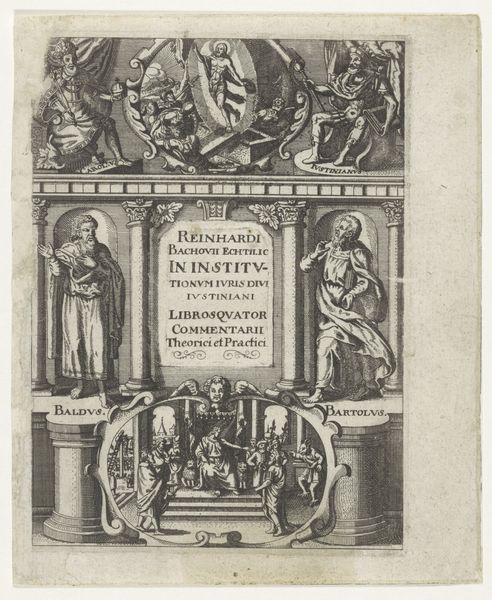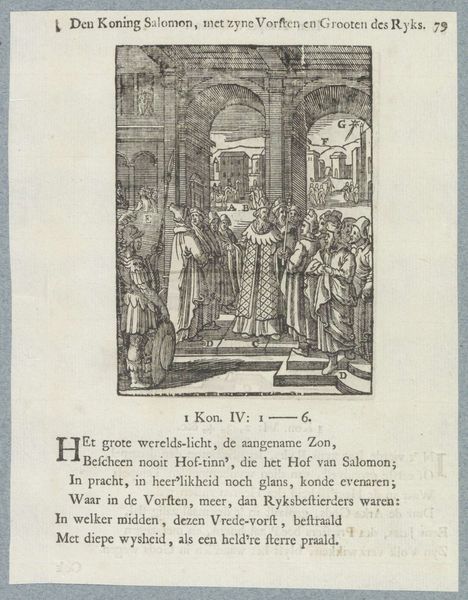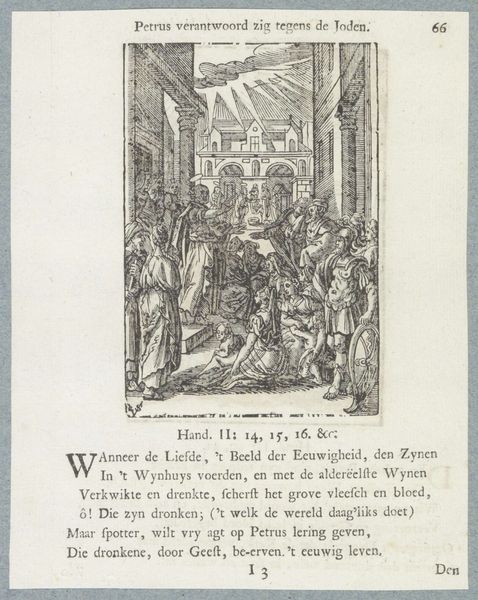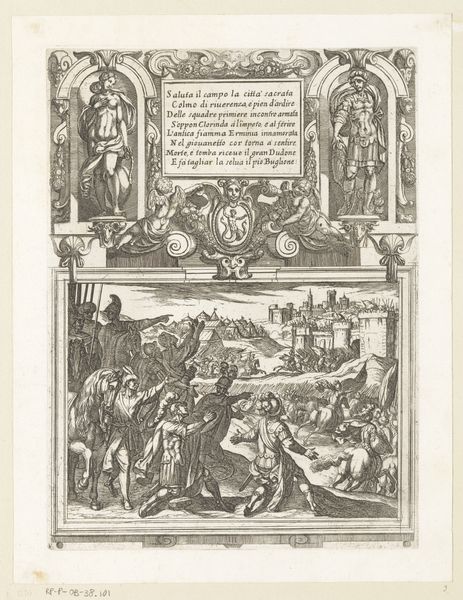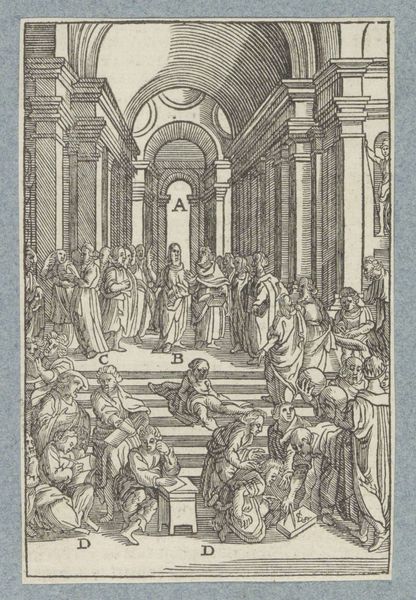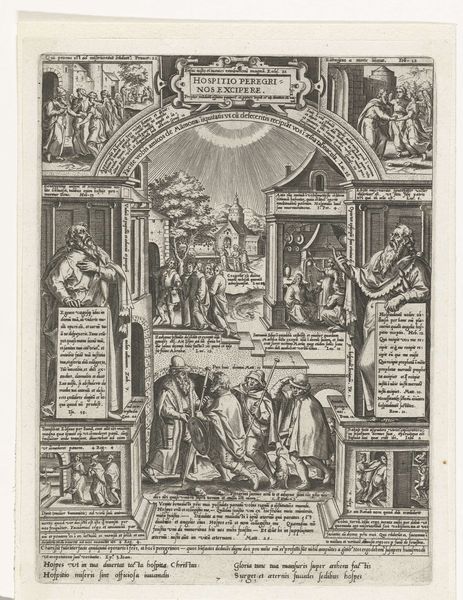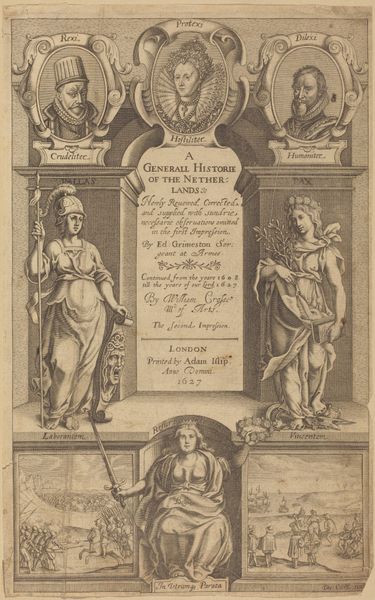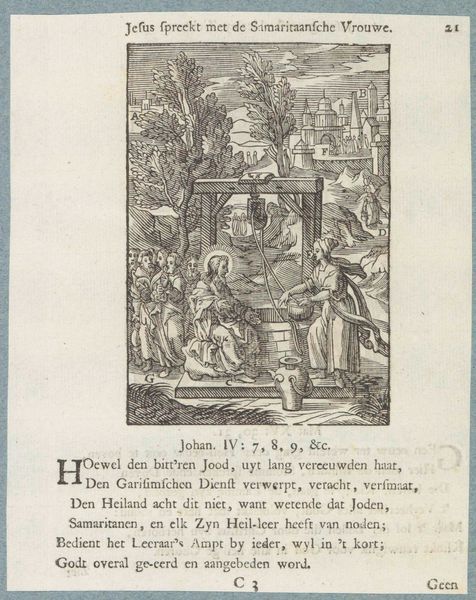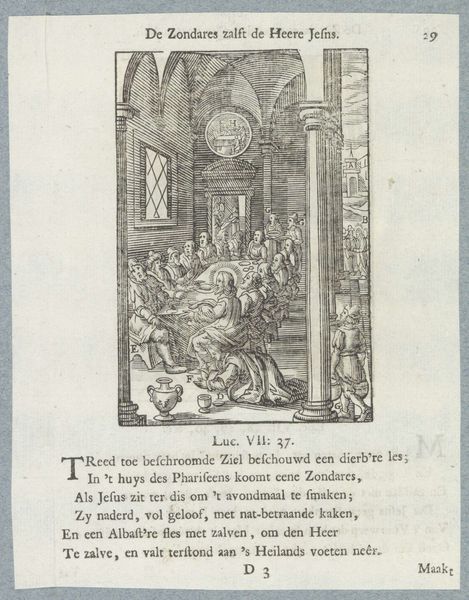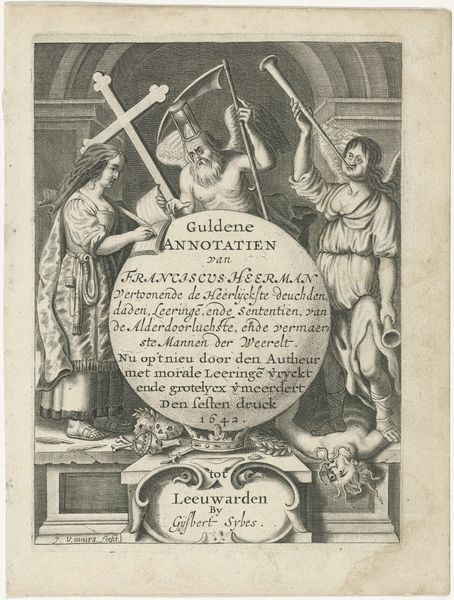
print, etching, engraving
#
narrative-art
#
baroque
# print
#
etching
#
old engraving style
#
history-painting
#
engraving
Dimensions: height 111 mm, width 75 mm, height 170 mm, width 136 mm
Copyright: Rijks Museum: Open Domain
Curator: The print we are looking at is entitled "Christus en de overspelige vrouw," depicting the biblical scene of Christ and the adulterous woman. While listed as 1629-1740, it’s crafted in that style and attributed to Christoffel van (II) Sichem. It's an etching and engraving, quite detailed for its size. Editor: It feels incredibly charged. The woman is in the foreground, but dwarfed by the architecture and crowded by accusers. The crosshatching emphasizes a sense of entrapment, visually. There’s a palpable tension. Curator: That tension is really the core of this image, and what these kinds of depictions tried to represent. Let’s think about the power dynamics in play here: gender, religion, law... This is not merely a morality tale; it's a snapshot of patriarchal power. Editor: Absolutely. The symbols resonate deeply. The woman, shamed, positioned almost as a sacrifice before these pillars, these supposed bastions of righteousness. And Jesus—notice how Sichem renders him: downcast, literally grounding himself. Curator: The artist uses that juxtaposition brilliantly to invert social expectations. The woman, objectified and condemned, is ultimately positioned as more virtuous by her vulnerability than those self-righteous figures surrounding her. There is a clear critique of societal structures. Editor: Looking at it again, the image works to emphasize not only judgment, but mercy too. Jesus is bent, writing on the ground. His act visually separates him, almost protecting the woman from the crowd’s rage. Curator: And that act of writing—scholars interpret that in a variety of ways, from referencing Mosaic law to simply showing Christ's refusal to engage on their terms. Ultimately, Christ is decentering the discourse. He embodies an alternate framework of moral authority, one based on forgiveness rather than punitive justice. Editor: Considering all of that, the etching transforms into a subtle, complex mirror reflecting how power and compassion clash—even centuries later. Curator: It becomes an enduring statement about the human condition. A very powerful statement about justice, empathy, and the structures that govern our lives, for sure.
Comments
No comments
Be the first to comment and join the conversation on the ultimate creative platform.
